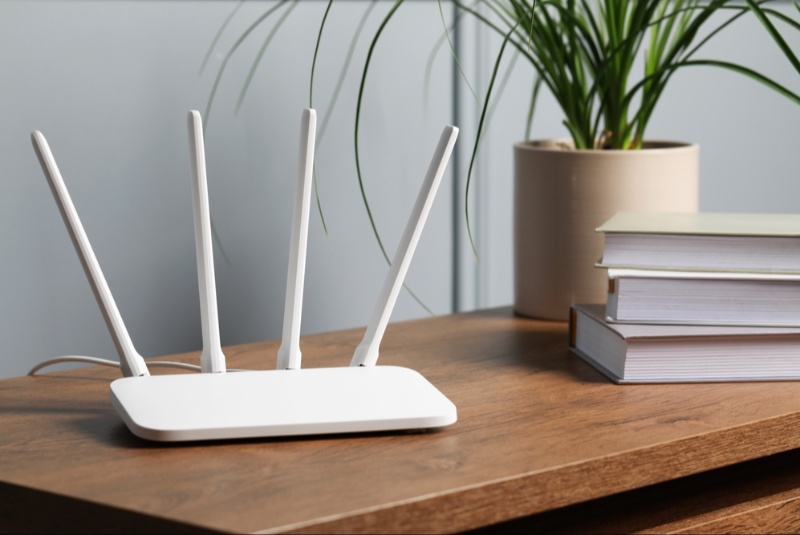In our increasingly connected world, a reliable wireless router is the cornerstone of a smooth and efficient home or office network. Whether you're streaming content, working from home, or gaming online, the right wireless router can significantly impact your internet experience. This guide explores essential tips on buying wireless routers, helping you make informed decisions to ensure robust and uninterrupted connectivity.
Understanding Your Network Needs: Tailoring Routers to Usage
1. Assessing Device Count
Consider the number of devices connected to your network. A household with multiple smartphones, laptops, smart TVs, and IoT devices requires a router with sufficient capacity to handle simultaneous connections without compromising speed.
2. Internet Speed Requirements
Understand your internet plan's speed requirements. Different routers support varying speeds, and investing in a router that aligns with or exceeds your internet plan ensures optimal performance.
Router Types and Standards: Navigating Wireless Protocols
1. Wi-Fi Standards
Familiarize yourself with Wi-Fi standards. The latest standard is Wi-Fi 6 (802.11ax), offering improved speed, efficiency, and better performance in crowded networks. However, Wi-Fi 5 (802.11ac) routers still provide excellent performance and are more budget-friendly.
2. Dual-Band vs. Tri-Band
Choose between dual-band and tri-band routers. Dual-band routers operate on both 2.4GHz and 5GHz frequencies, while tri-band routers add an additional 5GHz band. Tri-band routers are beneficial for networks with numerous devices.
Coverage and Range: Ensuring Seamless Connectivity
1. Assessing Coverage Area
Evaluate the size of your home or office. Larger spaces require routers with extended coverage. Mesh routers, consisting of multiple nodes, are excellent for expansive areas, eliminating dead zones and ensuring consistent coverage.
2. Beamforming Technology
Look for routers with beamforming technology. This feature directs the Wi-Fi signal toward connected devices, enhancing signal strength and range. This is particularly beneficial for homes with multiple rooms or floors.
Security Features: Prioritizing Network Protection
1. WPA3 Encryption
Ensure the router supports WPA3 encryption. WPA3 is the latest and most secure Wi-Fi encryption standard, providing enhanced protection against unauthorized access and cyber threats.
2. Guest Network Capability
Opt for routers with guest network capabilities. This feature allows you to create a separate network for guests, ensuring that your primary network remains secure and private.

Speed and Performance: Choosing Routers for High-Intensity Activities
1. Gigabit Ethernet Ports
If you engage in activities that demand high-speed connections, such as gaming or 4K streaming, look for routers with Gigabit Ethernet ports. These ports facilitate faster wired connections for devices like gaming consoles or smart TVs.
2. Quality of Service (QoS) Settings
Check for Quality of Service (QoS) settings. QoS prioritizes certain types of internet traffic, ensuring that activities like video calls or online gaming receive higher priority for a smoother experience.
Router Brand and Model: Evaluating Reliability
1. Researching Brands
Conduct research on reputable router brands. Established brands with positive reviews and a history of reliable products are more likely to provide a satisfactory and durable router.
2. Firmware Updates
Choose a router that receives regular firmware updates. Firmware updates address security vulnerabilities, enhance performance, and introduce new features. Routers with automatic update capabilities are particularly convenient.
Ease of Setup and Use: Ensuring User-Friendly Configuration
1. User-Friendly Interface
Look for routers with a user-friendly interface. A straightforward setup process and an intuitive management interface make it easier to configure and monitor your router.
2. Mobile App Support
Consider routers that come with mobile app support. Mobile apps allow you to manage and monitor your router from your smartphone, providing convenience and accessibility.
Budget Considerations: Balancing Features and Affordability
1. Value for Money
Evaluate the value for money offered by routers. While budget considerations are important, prioritize routers that provide the necessary features for your specific needs, ensuring a balance between affordability and functionality.
2. Long-Term Investment
View the purchase of a router as a long-term investment. Spending a bit more for a high-quality router often pays off in terms of reliability, performance, and longevity.
Compatibility with Devices: Ensuring Seamless Integration
1. Device Compatibility
Check the compatibility of the router with your devices. Ensure that it supports the Wi-Fi standards and frequency bands used by your smartphones, laptops, smart TVs, and other connected devices.
2. Internet Service Provider (ISP) Compatibility
Verify that the router is compatible with your internet service provider (ISP). Some routers may not work optimally with certain ISPs, so confirming compatibility ensures seamless connectivity.
Elevating Your Connectivity Experience
Buying a wireless router involves understanding your network needs, navigating wireless protocols, assessing coverage and range, prioritizing security features, considering speed and performance, evaluating brand reliability, ensuring user-friendly configuration, balancing budget considerations, and verifying compatibility. By following these tips, you can choose a wireless router that elevates your connectivity experience, providing reliable and high-speed internet for all your devices.




